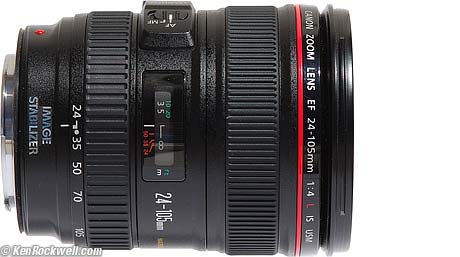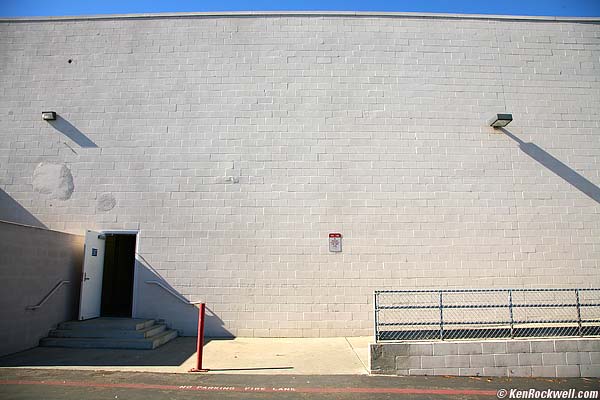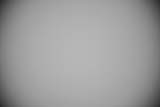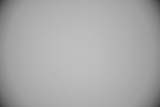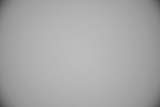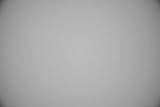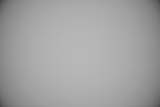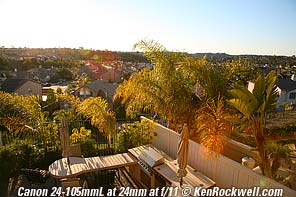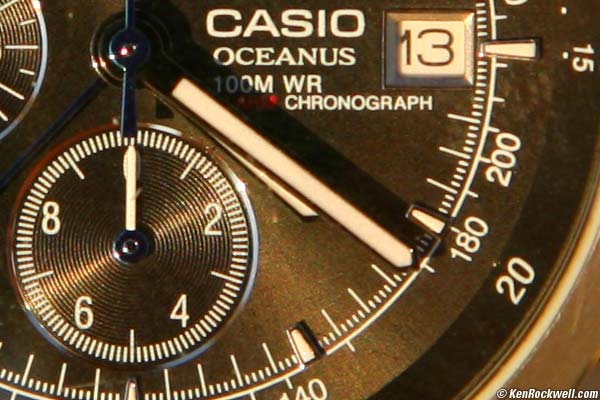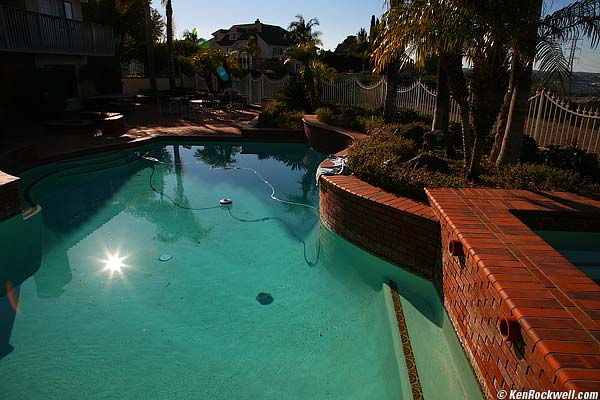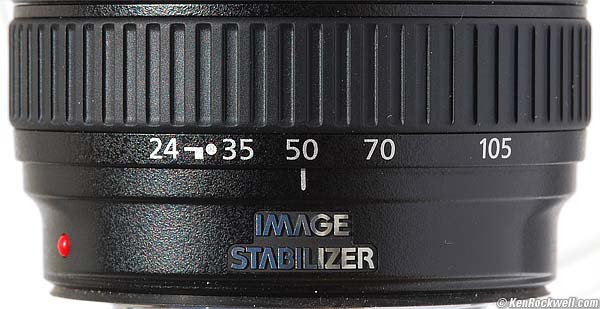Home Donate New Search Gallery Reviews How-To Books Links Workshops About Contact
Canon 24-105mm f/4 L IS
Full-Frame (2005~2016)
Intro Specs Performance Compared Recommendations
Canon 24-105mm f/4 L IS USM (77mm filters, 23.4 oz./664g, 1.5'/0.45m close-focus, about $325 used if you know How to Win at eBay. enlarge. Trick photo: roll mouse over to see it zoom! I'd get mine at B&H, or at Amazon, or used at eBay. This free website's biggest source of support is when you use those or any of these links when you get anything, regardless of the country in which you live. Thank you! Ken.
February 2024, April 2018 Canon Reviews Canon Lenses All Reviews
NEW: Canon 24-105mm f/4 L IS II 25 August 2016.
Introduction top
Intro Specs Performance Compared Recommendations
|
|
This is Canon's highest performance professional midrange zoom for film, full-frame and 1.3x digital cameras. The Canon 24-105mm f/4L has great optics and works extremely well. My biggest whine is that the zoom ring takes a lot of effort and that the wide end of the zoom range is cramped, making it difficult to set wide focal lengths precisely.
It's silly to use this on a 1.6x sensor camera like the Rebels and 30D because 1.) you're paying a premium for large-sensor performance but using only the center of the image, and 2.) 24mm isn't wide on a 1.6x camera: 24mm on a 1.6x camera gives the same angle of view as a 39mm lens does on a 35mm camera. For 1.6x cameras, the excellent 17-55mm f/2.8 IS makes more sense because it weighs less, is one stop faster, has much less distortion and covers what I find to be a more useful range of focal lengths. Heck, for 1.6x cameras, also check out the excellent 17-85mm IS.
Good
● Excellent optical performance at every focal length and distance. I wasn't able to make an unsharp shot.
● Excellent Image Stabilization: I got four real stops of improvement at 105mm.
● Unusually accurate, fast and consistent autofocus.
Bad
● Cramped zoom ring, especially at the wide end.
● Lots of distortion (easily fixed with DxO)
● Big, heavy and expensive.
Specifications top
Intro Specs Performance Compared Recommendations
Name
Canon calls this the Canon Zoom Lens EF 24-105mm f/4 L IS USM.
EF: Electronic Focus. All modern Canon lenses do this: a motor in the lens does the focusing.
L: Expensive as L. No technical meaning other than being Canon's lingo for lenses with extra durability and weather sealing. L lenses work on all cameras including film and full-frame digital. Canon puts a red band around the front of these.
IS: Image Stabilization, which means no tripod needed except for time exposures. See Why IS Matters.
USM: Ultra-Sonic Motor: The focus motor operates silently.
Focal Length
24-105mm.
Used on a 1.3x camera it gives angles of view similar to what a 30-132mm lens would give on a 35mm film camera.
On a 1.6x camera it gives angles of view similar to what a 39-170mm lens would give on a 35mm film camera.
See also Crop Factor.
Optics
18 elements in 13 groups, including one glass molded aspherical, two plastic-resin-on-glass (replica) asphericals and an element of Super-UD glass.
UD glass is the same as Nikon's ED glass, which helps reduce color fringing.
Five-group zooming.
Diaphragm
8 blades
Stops down to f/22.
Filter Size
77mm, the pro standard.
Plastic threads.
Close Focus
1.5' (0.45m) from the image plane (the back of the camera), rated.
Maximum Reproduction Ratio
1:4.3.
Size
3.286" diameter x 4.218" extension from flange (83.45 x 107.15mm) at 24mm setting; 5.474" (139.06mm) extension at 105mm setting.
Weight
23.45 oz. (664.5 g), measured.
Hood
EW-83H plastic bayonet, included.
Case
$33 LP1219 sack, included.
Introduced
August, 2005.
Available
Since September 2005.
Price, USA
2024 February: About $325 used if you know How to Win at eBay.
2016 August: $1,100 new or about $500 used if you know How to Win at eBay
2011 October: $1,120.
PERFORMANCE top
Intro Specs Performance Compared Recommendations
Autofocus Bokeh Color Color Fringes Construction
Distortion Falloff Filters Flare Macro Serial #
Sharpness Sound Sunstars IS Zooming
The Canon 24-105mm f/4 L IS is among the worlds' best lenses, but difficult to use over extended periods. My fingertips actually hurt after using this lens for a while because of the stiff zoom ring and its cramped wide-angle end.
FOCUSING back to Performance or back to Introduction.
Autofocus is unusually good. It has no weak spots.
Speed
AF speed is almost instantaneous. It's faster than my own eyes can focus on both my XTi and my 5D.
Sound and Noise
It's almost silent.
Manual Focus: Plastic on plastic.
Autofocus: About the same.
Ease of Manual Focusing
Very good. Just grab the ring at any time, no switches needed.
Look for the AF-area LEDs to blink as you turn the ring. Being an f/4 lens, it doesn't pop that obviously on the ground glass.
Autofocus Accuracy
Excellent.
I get perfect results at f/4 on my 5D all of the time. This is much better than average for other Canon lenses.
On my XTi I get perfect results 97% of the time. The other one out of thirty shots may be slightly off-focus, at f/4. You'd never see this in real shots of three-dimensional objects. I only saw it testing for it deliberately.
Focus Breathing
Breathing is a motion picture term which refers to what happens as you pull (change) focus from near to far. This might be of interest to cinematographers, but not to still photographers.
The 24-105mm changes magnification slightly as one pulls focus.
BOKEH back to Performance or back to Introduction.
Bokeh is mediocre. Highlights behind the subject can have a somewhat rolled-condom look, especially wide open at the long end where you'd most worry about bokeh.
Here are crops from various images shot at about 5 feet (1.5m) to show you the look of the blur circles.
These were shot on my 5D at 4,300 pixels wide and cropped and rescaled depending one the focal length. The 24mm shot was cropped from a 400 pixel wide area, the 50mm shot cropped from an 800 pixel wide area, and the 105mm images cropped from a 1,100 pixel wide area. All these images were rescaled to 296 pixels wide and not sharpened.
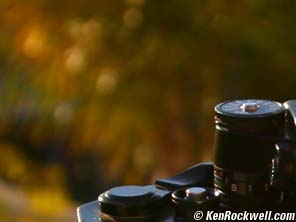 |
|
at 24mm at f/4 |
at 50mm at f/4 |
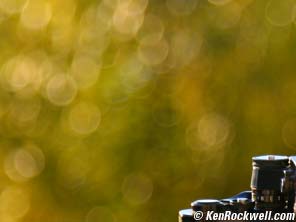 |
 |
at 105mm at f/4 |
at 105mm at f/5.6 |
COLOR FRINGES
(Lateral Chromatic Aberration or LCA)
back to Performance or back to Introduction.
This lens is approved by the PPLFPA, Professional Patio and Lawn Furniture Photographers' Association, with a grade of "B." Color fringes aren't a problem unless you're looking for them.
On a full-frame 5D, it has some color fringes at each end of the zoom range and none around 50mm. If you're shooting patio furniture, shoot around 50mm.
Here are the full guide images from which the crops are taken:
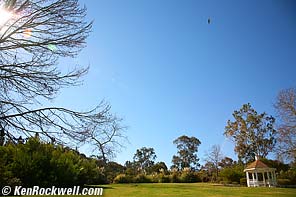 |
 |
Full image, full frame, 24mm (That's a hawk circling, not dust.) |
Full image, full frame, 105mm
|
|
 |
100% crop from 5D at 24mm |
100% crop from 5D at 28mm |
 |
 |
100% crop from 5D at 35mm |
100% crop from 5D at 50mm |
 |
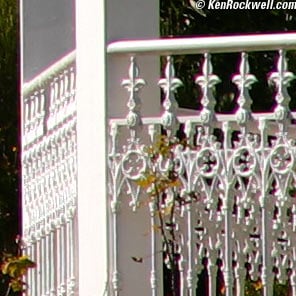 |
100% crop from 5D at 70mm |
100% crop from 5D at 105mm |
I see no differences from my other Canon lenses.
back to Performance or back to Introduction.
It has a rubber gasket on the lens mount to keep crud out of your camera.
Exterior
Plastic.
Filter Threads
Plastic.
Focus Ring
Metal with a rubber ring.
You some pressure against the rubber to get traction since its not that sticky.
Markings
Paint.
Switches
Plastic.
Mount
Metal.
Internals
Mostly metal.
Noises when shaken
Moderately light klunking. This is normal.
Quality
Made in Japan.
DISTORTION back to Performance or back to Introduction.
Unlike the superb 24-70mm f/2.8 L or the low-distortion 17-55mm f/2.8 IS EF-S (which only works on 1.6x digital cameras), this 24-105mm f/4 has loads of distortion.
Luckily DxO makes a module for it, which rectifies it perfectly. If you worry about this, buy the DxO program, since the distortion is so wild at 24mm that Photoshop can't correct it well.
Full-frame distortion at 24mm. Roll mouse over to see after -5.5 correction in Photoshop CS2's lens distortion filter.
Full-frame distortion at 24mm. Roll mouse over to see after correction in DxO. DxO also corrects everything else, like color fringing and light falloff.
Here is the Wall of Shame at each setting:
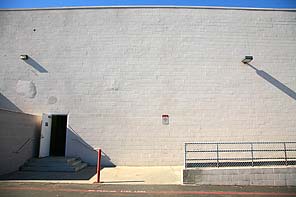 |
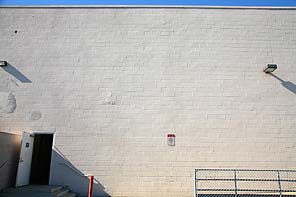 |
At 24mm, full-frame 5D |
At 28mm, full-frame 5D |
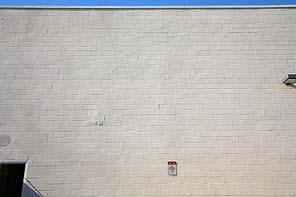 |
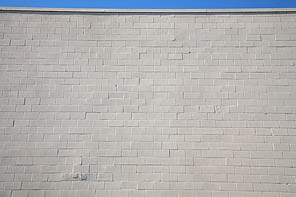 |
At 35mm, full-frame 5D |
At 50mm, full-frame 5D |
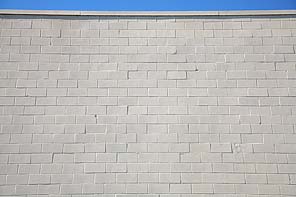 |
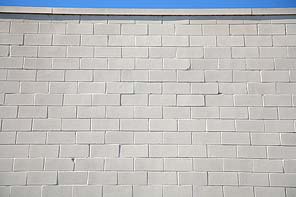 |
At 70mm, full-frame 5D |
At 105mm, full-frame 5D |
If you're too cheap for DxO, plug these figures into Photoshop CS2's lens distortion filter to correct the distortion. These figures are for you to enjoy in your photography. These took me hours to calculate and are all © and registered, so you'll need permission to use these figures for anything else. Thanks! Ken.
at 50' (15m) |
|
24 mm |
+5.5** |
28 mm |
+0.5* |
35 mm |
-1.25 |
50 mm |
-2.0 |
70 mm |
-2.4 |
105 mm |
-2.5 |
* Some waviness remains if you're looking for it.
** A lot of waviness remains if you're looking for it.
back to Performance or back to Introduction.
The corners get darker at the wide end, even stopped down. They also get darker at f/4, regardless of focal length. Stick to longer focal lengths and smaller apertures if it concerns you, or use DxO which corrects it.
The 24-105mm is worst at f/4 and 24mm; see the version of this shot before and after DxO correction below.
Here are shots of an Expodisc on my full-frame 5D. This is a tough test which shows even the slightest falloff. You'll almost never see this in normal photography. This also would be almost invisible on a 1.3x or 1.6x camera (see crop factor).
